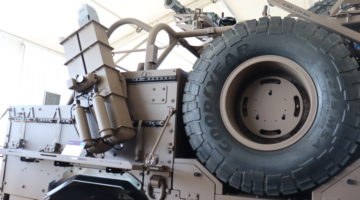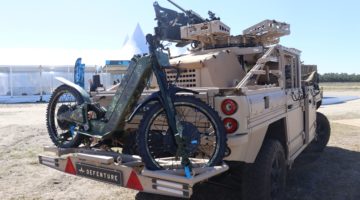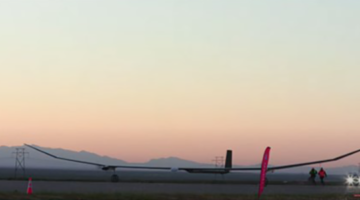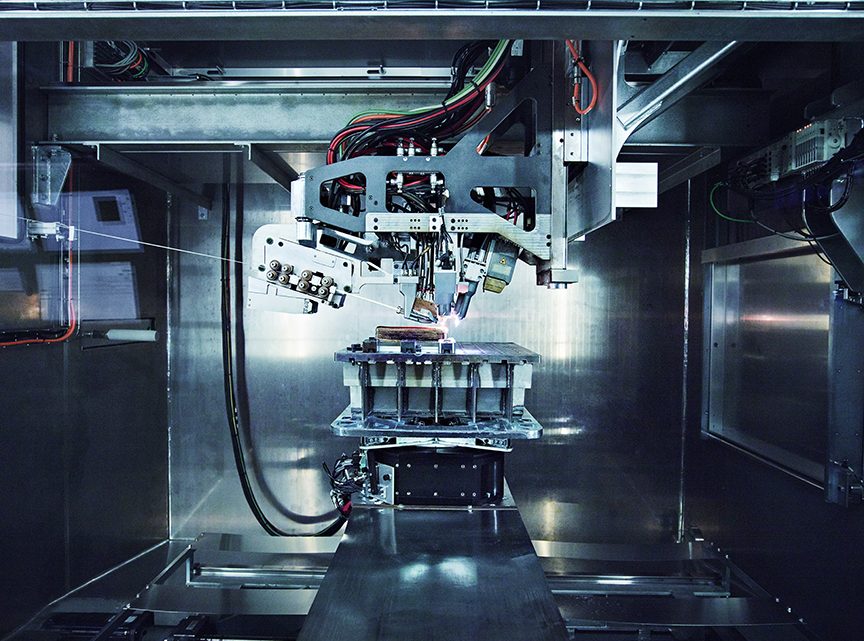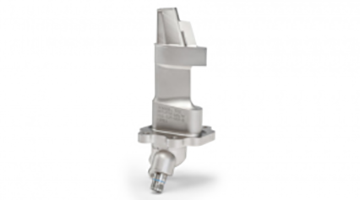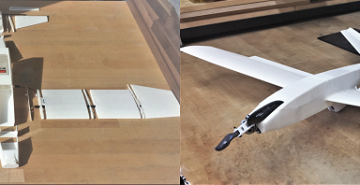(Source: 3dprint.com) – by Clare Scott – Norsk Titanium Produces First FAA-Approved 3D Printed Structural Titanium Commercial Airplane Components for Boeing Dreamliner
When a company develops a unique technology, it’s understandable that they should want to keep it closely guarded, particularly in this digital era. Norsk Titanium has been developing their Rapid Plasma Deposition 3D printing technology for 10 years, but they only allowed people outside the company to learn how the process works a little over a year ago. Rapid Plasma Deposition (RPD) involves the melting of titanium wire in a cloud of argon gas, and it produces parts at a fast rate that require very little finish machining, if any. If Norsk Titanium has been secretive about their technology, however, they’re certainly not averse to sharing it now – and if you’ve never heard of the company, that’s about to change as Norsk makes aviation history.
It’s no surprise that the aerospace and aviation industries should be highly interested in the technology, and today Norsk Titanium announced that they’ve received a production purchase order from Boeing for 3D printed structural titanium components produced with the RPD technology. Although Boeing isn’t new to 3D printing, they’ve just shot to the forefront of the aviation 3D printing race with Norsk Titanium’s parts, which will be officially the first FAA-approved 3D printed titanium structural components to be used in a commercial airplane.
“We are proud to take this historical step with a great aerospace innovator like Boeing,” said Norsk Titanium President and Chief Executive Officer Warren M. Boley, Jr. “The Norsk Titanium team will continue to expand the portfolio of components supplied to Boeing meeting stringent certification requirements. It is an honor to earn FAA approval for these structural parts.”
FAA certification deliverables were completed in February of this year for the components, which the two companies worked together to create for Boeing’s 787 Dreamliner. The Dreamliner already has several 3D printed parts, one of the first commercial aircraft to incorporate the technology. Boeing designed the new components, with Norsk Titanium working closely alongside them. At this time, the order is for a total of four structural parts, but according to Boley, the order is expected to expand, possibly into thousands of parts.
“From the outset, the 787 has been the hallmark of innovation and efficiency,” said John Byrne, Vice President, Airplane Materials and Structures, Supplier Management, Boeing Commercial Airplanes. “We are always looking at the latest technologies to drive cost reduction, performance and value to our customers and Norsk Titanium’s RPD capability fits the bill in a new and creative way.”
The parts were produced on Norsk Titanium’s MERKE IV Rapid Plasma Deposition machine, which is capable of 3D printing parts of up to 80% near-net-shape. Rapid Plasma Deposition technology, which Norsk Titanium describes as “more adding and less subtracting,” cuts back on costs and energy usage compared to other manufacturing techniques, thanks to its minimal requirement for machining after printing. The first MERKE IV machine was installed at Norsk’s new Plattsburgh, New York facility last year, and two more are on the way this week. Eventually there will be nine of the machines at the facility, and production for the Boeing order is expected to transition there from Norsk’s Norway location.
A full-scale mockup of the MERKE IV, as well as the parts produced for the Dreamliner, will be on display at the International Paris Airshow, which is taking place from June 19 to 25 at Le Bourget. If you’ll be at the trade show, stop by and visit Norsk Titanium at their booth in Hall 1, Space H299. (…)
READ FULL ARTICLE >>> https://3dprint.com/170652/norsk-titanium-boeing-aircraft/
Photo © ibid



